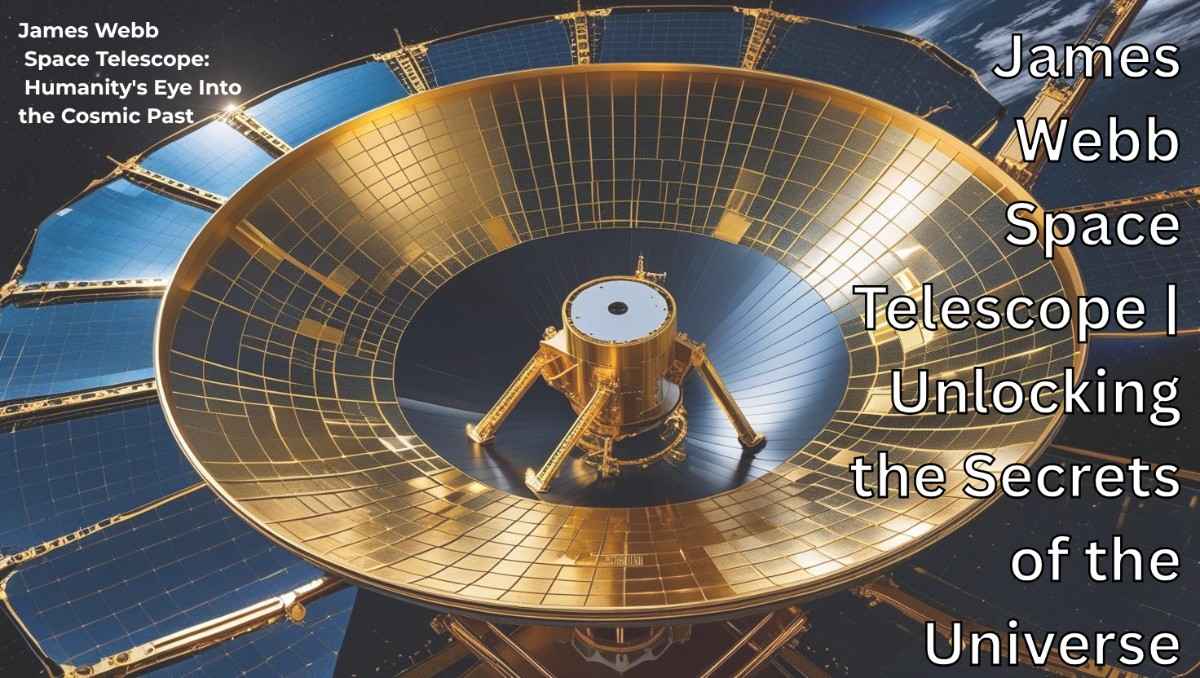James Webb Space Telescope: Humanity’s Eye Into the Cosmic Past
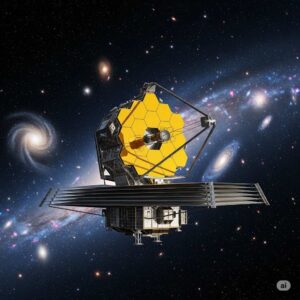
The James Webb Space Telescope is more than just a successor to the Hubble Space Telescope—it is a revolutionary tool that marks a new era in space exploration. second Lagrange point (L2), about 1.5 million kilometers from Earth. Since then, it has become a symbol of scientific advancement, capable of peering deeper into the universe than any telescope before it.
This ability to gaze into the cosmic past makes the one of the most important astronomical instruments in history.
Why the James Webb Space Telescope Was Built
The need for the James Webb Space Telescope arose from limitations encountered with Hubble. While the Hubble Space Telescope provided breathtaking views in visible and ultraviolet light, it struggled with infrared observations due to its location in Earth’s low orbit and limitations in cooling systems. The James Webb Space Telescope, in contrast, is optimized for infrared astronomy.
Its main objectives include:
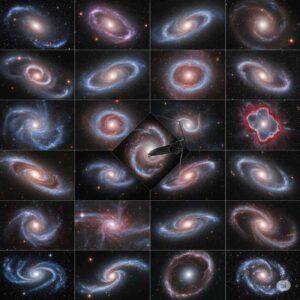
-
Studying the formation of the first galaxies
-
Observing the birth of stars and planetary systems
-
Examining exoplanets and their atmospheres
-
Investigating the chemical makeup of distant worlds to search for signs of life
The has a segmented 6.5-meter mirror, over six times the collecting area of Hubble.
Engineering Marvel: Design and Components
Every component was designed with precision to survive the harsh conditions of space while providing unmatched observation quality.
Primary Mirror
These can be adjusted individually to maintain perfect alignment, a crucial feature for image clarity.
Sunshield
To function effectively, the James Webb Space must remain incredibly cold—below 50 K (-223°C). The sunshield protects the telescope from sunlight, Earthlight, and moonlight.
Scientific Instruments
The James Webb Space carries four key instruments:
-
NIRSpec (Near Infrared Spectrograph) – studies hundreds of galaxies simultaneously
-
MIRI (Mid-Infrared Instrument) – observes older, dustier objects in the mid-infrared
These instruments allow the James Webb Space to peer through cosmic dust and view objects previously hidden from observation.
Key Discoveries and Observations
Since its deployment, the James Webb Space has delivered spectacular data and images that have challenged previous astronomical theories.
The Oldest Galaxies Ever Observed
These galaxies appeared surprisingly mature, challenging our understanding of galaxy formation timelines.
Exoplanet Atmospheres
One of the most groundbreaking achievements of the is its ability to analyze exoplanet atmospheres. It has detected water vapor, carbon dioxide, methane, and other potential biosignatures in distant worlds.
Stellar Nurseries and Star Formation
The James Webb Space on. These observations provide insight into how stars and solar systems develop.
James Webb Space Telescope vs. Hubble
The James Webb Space often draws comparisons to its predecessor, Hubble. While both are iconic, their differences highlight why the was necessary.
| Feature | Hubble | James Webb Space Telescope |
|---|---|---|
| Orbit | Low Earth Orbit | L2 Point (1.5 million km away) |
| Mirror Size | 2.4 meters | 6.5 meters |
| Wavelength | UV, Visible, Near-IR | Near-IR, Mid-IR |
| Cooling System | Passive | Cryogenic with sunshield |
| Primary Focus | Visible-light astronomy | Infrared astronomy |
These differences enable the James Webb Space to see deeper, clearer, and further into space.
Looking for Life Beyond Earth
A major objective of the James Webb Space is to assess the habitability of exoplanets. By examining their atmospheres for signs like water vapor, methane, and carbon-based molecules, the contributes significantly to the search for extraterrestrial life.
One of the most talked-about observations was the analysis of the TRAPPIST-1 system. The studied multiple Earth-like planets in this system, revealing chemical fingerprints in their atmospheres and raising questions about possible life-supporting conditions.
International Collaboration and Management
Managed by NASA’s Goddard Space Flight Center, it was developed in partnership with ESA and CSA. Over 300 institutions and thousands of scientists contributed to its creation, making the a symbol of humanity’s shared curiosity about the universe.
Educational and Public Impact
Schools, universities, and amateur astronomers have engaged with its discoveries through images, data, and outreach programs.
Future of the James Webb Space Telescope
The James Webb Space is expected to remain operational for at least 10 years, potentially up to 20. As it continues to uncover new knowledge, planned studies include:
-
High-resolution maps of exoplanet surfaces
-
Monitoring the atmospheres of moons like Titan
-
Tracking the movement of early-universe black holes
The future holds endless possibilities for the including synergy with upcoming missions like the Nancy Grace Roman Space Telescope and the European Extremely Large Telescope.
Where Is the James Webb Telescope Right Now?
Introduction
Since its launch on December 25, 2021, the James Webb Space Telescope has been one of the most talked-about achievements in the history of space exploration. People all over the world have marveled at the sharp, high-resolution images it has provided—from ancient galaxies to the dusty birthplaces of stars. But one question continues to capture the curiosity of both amateur stargazers and professional astronomers: Where is the James Webb Telescope right now?
This spot offers the perfect environment for the James Webb Space Telescope to carry out its mission of peering into the deepest parts of the cosmos.
Understanding Lagrange Point 2 (L2)
These are positions in space where the gravitational forces of the Earth and the Sun, along with the orbital motion of a satellite, combine to create a stable location for objects to “hover.”
What Is L2?
Located about 1.5 million kilometers away from our planet, this gravitational “sweet spot” allows the James Webb Space Telescope to stay aligned with Earth as it orbits the Sun.
Earth and Sun. This stable gravitational environment makes L2 an ideal location for space telescopes that need a cold, dark, and unobstructed view of the universe.
Why Was L2 Chosen for the James Webb Space
The James Webb Space Telescope is designed to observe infrared light, which is emitted by distant galaxies, dying stars, and other faint cosmic sources. To function correctly, it must remain extremely cold—colder than -223°C (50 K). L2 offers a number of advantages that help keep the James Webb Space Telescope at its optimal temperature.
Constant Shielding
At L2, the James Webb Space Telescope can use its massive sunshield to block light and heat from the Sun, Earth, and Moon simultaneously. This positioning keeps the sensitive instruments on the cold side of the telescope completely dark and cool.
Stable Observing Conditions
Because it’s not in low-Earth orbit, the James Webb Space Telescope experiences far less interference from Earth’s radiation and atmosphere. This allows for longer, uninterrupted observations and cleaner data collection.
Unobstructed View of the Universe
L2 allows the James Webb Space Telescope to continuously point its mirrors toward deep space. With no atmospheric distortion and no Earth to block its view, Webb can observe distant galaxies for weeks or even months without interruption.
Real-Time Tracking of the James Webb Space Telescope
While the James Webb Space Telescope is stationed near L2, it does not remain perfectly stationary. In reality, it orbits around the L2 point in a halo orbit—a three-dimensional elliptical path that ensures it never enters Earth’s shadow and maintains a stable thermal environment.
NASA provides real-time tracking of the James Webb Space Telescope via its Where Is Webb? web interface. This dashboard allows anyone to view live updates of:
-
Distance from Earth
-
Distance from Sun
-
Speed relative to Earth
-
Telescope temperature
-
Deployment phase (if applicable)
As of now, the James Webb Space Telescope is maintaining its halo orbit perfectly, approximately 1.5 million kilometers from Earth, and functioning optimally.
The Halo Orbit Explained
A halo orbit is a stable, looping path around a Lagrange Point. Instead of staying fixed at a single point in space, the James Webb Space Telescope moves in a controlled, repeating loop around L2. This ensures two main things:
-
Thermal Stability: It avoids entering Earth’s shadow, which would cause rapid cooling and heating.
-
Solar Panel Exposure: Webb’s solar arrays always receive sunlight to power its systems.
The orbit takes about six months to complete, and during this time, the James Webb Space Telescope continues to gather valuable data from the farthest reaches of the universe.
How the Location Helps with Observations
This remote vantage point allows it to capture:
-
Faint infrared light from galaxies that formed shortly after the Big Bang
-
Light-blocked regions of space like nebulae and protostars
Because of its position, the James Webb Space Telescope can conduct long-term observations of distant targets with extraordinary precision.
Communication and Data Transfer
You might wonder how scientists on Earth communicate with the James Webb Space Telescope, given its vast distance. NASA uses the Deep Space Network (DSN), a system of massive antennas located in California, Spain, and Australia.
These facilities ensure:
-
Continuous communication with the James Webb Space Telescope
-
High-speed transmission of scientific data
-
Regular updates to the telescope’s commands and software
Even though the James Webb Space Telescope is far away, scientists are in constant contact with it, adjusting its instruments, refining its targets, and analyzing the data it sends back.
The Long-Term Stay at L2
The James Webb Space Telescope is expected to operate at L2 for at least 10 years, and potentially up to 20, depending on fuel consumption and technical performance. Its propellant, used for orbit correction and station keeping, is carefully monitored to extend the telescope’s life as long as possible.
Key Mission Milestones at L2
-
January 2022: Arrival at L2
-
Mid-2022: Full commissioning and calibration
-
July 2022: First full-color scientific images released
-
2023–Present: Continuous data collection on exoplanets, early galaxies, and black holes
The James Webb Space Telescope is not expected to leave L2 unless another spacecraft one day moves it post-mission. Until then, its home is firmly
What Is the Purpose of the James Webb Space Telescope?
Introduction
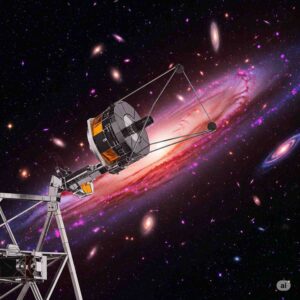
The James Webb Space Telescope (JWST) is the most powerful and ambitious space observatory ever built by humanity. Launched on December 25, 2021, and now stationed 1.5 million kilometers from Earth, this next-generation telescope is often described as the successor to the legendary Hubble Space Telescope. But many people still wonder: What is the purpose of the James Webb Space Telescope? Why did humanity invest over $10 billion and decades of research into its development?
The purpose of the James Webb Space Telescope goes far beyond simply “looking into space.” It was designed to answer some of the most profound questions in astronomy and cosmology: How did the universe begin? What are the origins of stars and galaxies? Are we alone in the universe? Let’s dive deep into the specific objectives and purposes of this extraordinary instrument.
1. Looking Back in Time to the Origins of the Universe
One of the primary purposes of the James Webb Space Telescope is to observe the earliest moments after the Big Bang. The telescope is equipped to detect infrared light, which is essential because the light from the first galaxies and stars has been stretched (redshifted) into the infrared part of the spectrum due to the expansion of the universe.
Why Infrared Matters
Most early galaxies are so distant that their visible light can no longer be seen using traditional telescopes like Hubble. The James Webb Space Telescope sees in infrared wavelengths, allowing it to detect light that originated over 13.5 billion years ago. This capability lets astronomers study the formation of the first stars and galaxies, offering a direct look at the early universe in a way never before possible.
2. Understanding the Formation and Evolution of Galaxies
Another central purpose of the James Webb Space Telescope is to map the evolution of galaxies over cosmic time. By studying galaxies at different stages of development, astronomers hope to understand how galaxies like our own Milky Way formed and changed.
Key Goals:
-
Observe the structure and composition of early galaxies
-
Study galactic mergers and the effects of gravitational interactions
-
Understand how dark matter influences galaxy formation
With its deep-field vision, the James Webb Space Telescope is able to provide high-resolution images of galaxies at various distances, offering a time-lapse of galactic evolution.
3. Studying the Birth of Stars and Planetary Systems
One of the reasons the James Webb Space Telescope was designed to operate in infrared is to see through cosmic dust clouds—the nurseries of stars. Previous telescopes struggled to see inside these dusty regions, but infrared light can penetrate them, revealing what lies within.
Star Formation
The telescope’s infrared instruments allow it to observe protostars—young stars still in the process of formation. This is critical for understanding:
-
How stars form from clouds of gas and dust
-
The stages of stellar evolution
-
The role of gravity and magnetic fields in star birth
Planetary System Formation
In addition to stars, the James Webb Space Telescope also looks at protoplanetary disks—rotating disks of gas and dust around young stars where planets are forming. By observing these disks, Webb helps astronomers study:
-
How planets form and migrate
-
The presence of water, carbon, and other life-forming elements
-
The diversity of planetary systems beyond our own
4. Exploring Exoplanets and the Possibility of Life
One of the most exciting purposes of the James Webb Space Telescope is to study exoplanets—planets that orbit stars beyond our solar system. Over 5,000 exoplanets have been discovered, and Webb is equipped to analyze their atmospheres in unprecedented detail.
What Can Webb Detect?
Using a method called transit spectroscopy, the James Webb Space Telescope can observe starlight that passes through an exoplanet’s atmosphere. By analyzing the spectrum of this light, scientists can identify:
-
Atmospheric composition (hydrogen, helium, carbon dioxide, methane, etc.)
-
Temperature and pressure conditions
-
Possible signs of habitability or even biosignatures
This means that the James Webb Space Telescope could one day help answer the age-old question: Are we alone in the universe?
5. Studying Objects Within Our Own Solar System
Though much of the media focus is on Webb’s ability to observe distant galaxies, another purpose of the James Webb Space Telescope is to study objects within our own solar system. From Mars to the outer icy moons of Jupiter and Saturn, Webb can observe a wide variety of solar system bodies.
Targets Include:
-
Mars (atmospheric studies)
-
Jupiter and its moons (e.g., Europa, which may harbor a subsurface ocean)
-
Saturn’s rings and atmosphere
-
Uranus and Neptune (poorly studied by earlier missions)
-
Distant Kuiper Belt objects like Pluto and Eris
By examining these objects in infrared, the James Webb Space Telescope can provide insights into their compositions, surface temperatures, and potential for hosting life.
6. Investigating the Nature of Black Holes and Dark Matter
Another long-term purpose of the James Webb Space Telescope is to investigate supermassive black holes that lie at the center of most galaxies. It can detect the influence of these black holes on surrounding gas and stars, helping to understand:
-
How black holes grow and evolve
-
The relationship between black holes and galaxy formation
-
The dynamics of accretion disks and relativistic jets
Additionally, while the James Webb Space Telescope is not designed to directly detect dark matter, it can help measure the gravitational effects of dark matter on visible matter. This data contributes to models that try to explain the mysterious “dark” side of the universe.
7. Technological Demonstration and Inspiration for Future Missions
The James Webb Space Telescope is not only a scientific instrument—it’s a technological marvel. The mirror, sunshield, and deployment mechanisms all represent firsts in space engineering. Part of its purpose is to:
-
Prove the viability of large, deployable space telescopes
-
Inspire new generations of scientists, engineers, and dreamers
-
Serve as a prototype for even more advanced future telescopes
The techniques developed for the James Webb Space Telescope will influence astronomy and space exploration for decades to come.
What Did the James Webb Telescope Discover?
Introduction
With its powerful infrared instruments and 6.5-meter gold-coated mirror, the telescope has offered unprecedented views into deep space. But what did the James Webb Space Telescope actually discover? What breakthroughs has it achieved in its first years of operation?
From spotting ancient galaxies to examining exoplanet atmospheres and even detecting complex organic molecules in deep space, the James Webb Space Telescope has exceeded expectations. This article explores the most remarkable discoveries made by the James Webb Space Telescope, organized by scientific theme.
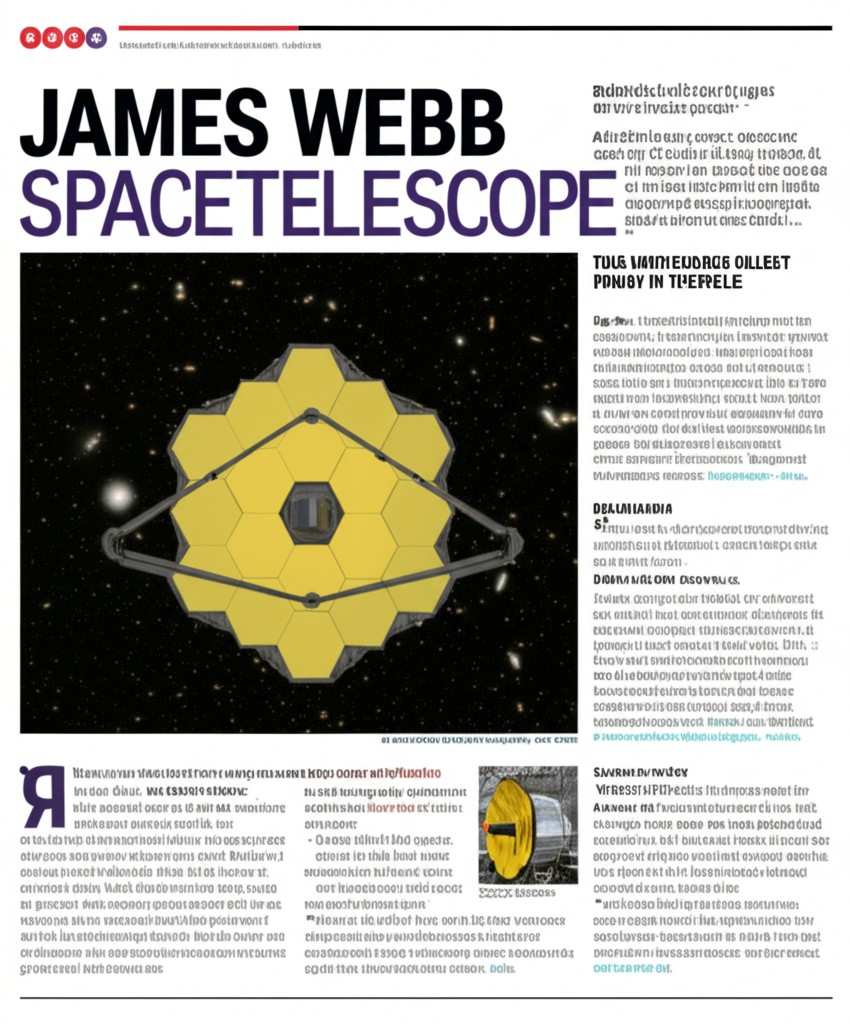
1. The Oldest Galaxies Ever Seen
One of the most astonishing discoveries by the James Webb Space Telescope is its ability to detect the earliest and most distant
🔭 Key Findings:
-
Galaxy CEERS-93316 was discovered at a redshift of z ≈ 16.7, meaning it existed only about 250 million years after the Big Bang.
-
These early galaxies are surprisingly mature and massive, challenging current models of galaxy formation.
This single discovery has forced astronomers to rethink the speed of galaxy evolution and the conditions in the early universe. The James Webb Space Telescope is helping scientists rewrite cosmic history.
2. Direct Observation of Exoplanet Atmospheres
The James Webb Space Telescope is also transforming exoplanet science. It can detect and analyze the chemical composition of exoplanet atmospheres by observing starlight that passes through them during transits.
🌍 Notable Discoveries:
-
WASP-39b: Detected carbon dioxide (CO₂) for the first time in an exoplanet’s atmosphere.
-
TRAPPIST-1 system: JWST has observed this nearby system with seven Earth-sized planets, some within the habitable zone.
-
Evidence of clouds, water vapor, and haze in several exoplanet atmospheres.
The James Webb Space Telescope has raised hopes that biosignatures might one day be detected.
3. The Pillars of Creation in Unprecedented Detail
The famous Pillars of Creation in the Eagle Nebula were first captured by Hubble in 1995, becoming one of the most iconic images in astronomy. The James Webb Space Telescope revisited this region in 2022, producing a sharper and more detailed image using infrared light.
🌌 Key Insights:
-
Revealed newborn stars previously hidden by dense clouds.
-
Mapped dust and gas in star-forming regions with unmatched precision.
-
Helped understand the lifecycle of stars from birth to death.
The James Webb Space Telescope showed that the universe is far more dynamic and structured than once believed, especially in star-forming regions.
4. Discovery of Organic Molecules in Space
Using its infrared spectrographs, the James Webb Space Telescope has detected complex organic molecules in various environments—from stellar nurseries to protoplanetary disks.
🧪 Important Detections:
-
Detected methane, sulfur dioxide, and carbon monoxide in exoplanet atmospheres.
-
Observed water ice and organic material in the young star system NGC 1333 IRAS 4B, suggesting the early building blocks of life.
These discoveries suggest that the chemistry of life might be common throughout the universe, not just unique to Earth.
5. Insight into the Birth of Stars and Planets
One of JWST’s primary scientific goals is to understand star and planet formation. Its infrared instruments allow it to peer through dusty regions where stars are born.
✨ Major Discoveries:
-
Observed protostars in the process of collapsing and igniting.
-
Captured protoplanetary disks with signs of forming planets.
-
Discovered that disks of gas and dust around young stars often contain key elements like carbon, nitrogen, and oxygen.
These insights are helping scientists learn how solar systems—including our own—form and evolve over time.
6. Mapping Dark Matter and Gravitational Lensing
While JWST cannot directly detect dark matter, it can observe its effects. One of the most powerful of these is gravitational lensing, where the gravity of massive objects bends and magnifies the light of distant galaxies.
🔍 Key Observations:
-
Observed Einstein rings and arcs created by massive galaxy clusters.
-
Helped create mass maps of galaxy clusters to study dark matter distribution.
-
Detected “lensed” galaxies magnified by 10x or more, allowing views into the early universe.
These gravitational lensing effects help researchers study dark energy and dark matter, two of the most mysterious elements of the cosmos.
7. Detailed Studies of Our Own Solar System
The James Webb Space Telescope has also turned its infrared eyes on planets, moons, and asteroids within our solar system.
🪐 Highlights:
-
Captured Jupiter in extraordinary detail, including its auroras and storm systems.
-
Detected atmospheric molecules on Saturn’s moon Titan, including methane and ethane.
-
Observed Mars during a dust storm, analyzing temperature and chemical variations.
-
Studied comets and asteroids, analyzing their water content and composition.
These observations are helping scientists understand how our solar system evolved and how Earth compares to other planetary bodies.
8. Galactic Collisions and Starburst Galaxies
The JWST has also observed dramatic events like galaxy mergers and starburst galaxies, which are regions of intense star formation.
🌠 Key Observations:
-
Revealed hidden star-forming regions inside merging galaxies.
-
Detected supermassive black holes feeding on matter in the centers of galaxies.
These dynamic processes are critical for understanding the evolution of galaxies and their interactions over billions of years.
What Was the First Image from James Webb Telescope?
Introduction
After decades of planning, engineering, and collaboration between space agencies across the globe, the James Webb Space Telescope finally launched on December 25, 2021, and reached its observation point at Lagrange Point 2 (L2) in January 2022.
The very first image captured by the James Webb Space Telescope marked a historic milestone in space science. It wasn’t just a pretty picture; it was a scientific achievement, a proof of precision, and a symbol of humanity’s quest to explore the unknown.
In this article, we will explore in detail:
-
What the first image from the James Webb Space Telescope was,
-
Why it was significant,
-
How it was captured,
-
And what it revealed about the telescope’s capabilities and the universe itself.
The First Image: A Deep Field Like Never Before
📷 SMACS 0723 – The First Full-Color Image
The first official image released by NASA from the James Webb Space Telescope was of SMACS 0723, a galaxy cluster located 4.6 billion light-years away. This image, unveiled on July 11, 2022, was presented by President Joe Biden in a live broadcast from the White House — underscoring the global importance of the moment.
Why SMACS 0723?
SMACS 0723 was chosen for this first deep-field image because it acts as a gravitational lens — meaning its massive gravity bends and magnifies light from even more distant galaxies behind it. This allows the James Webb Space Telescope to detect incredibly faint and distant galaxies that could not be observed before.
What Made the First Image So Special?
1. Unprecedented Depth and Clarity
The image of SMACS 0723 showed thousands of galaxies, including the faintest objects ever observed in infrared. Some of these galaxies are more than 13 billion years old, dating back to just a few hundred million years after the Big Bang.
Unlike the Hubble Space Telescope, which took weeks to achieve similar depth, the James Webb Space Telescope captured this deep field in less than 12 hours. The image demonstrated the raw power of JWST’s Near-Infrared Camera (NIRCam).
2. Rewriting the Limits of Observation
Astronomers were astonished by the detail. Spiral galaxies, colliding galaxies, and ancient red-shifted galaxies were all visible in stunning clarity. This first image from the James Webb Space Telescope immediately pushed the boundaries of the observable universe, allowing scientists to glimpse light from some of the oldest stars and galaxies.
3. Gravitational Lensing in Action
The SMACS 0723 image clearly showed multiple instances of gravitational lensing, where light from background galaxies was bent into arcs and rings around the foreground cluster. This helped scientists not only detect hidden galaxies, but also estimate the distribution of dark matter within the cluster.
How Was the Image Captured?
The image was created using data from the Near-Infrared Camera (NIRCam) onboard the James Webb Space Telescope. This instrument is designed to observe infrared wavelengths of light — perfect for peering through cosmic dust and capturing light that has been redshifted by the expansion of the universe.
Data from multiple filters were combined and colorized to produce the final full-color image. Each color in the image represents a different infrared wavelength, with blue showing the shortest wavelengths and red showing the longest.
This method not only created a breathtaking visual, but also allowed scientists to analyze the temperature, structure, and composition of distant celestial bodies.
Behind the Scenes: The Calibration Image
It’s worth mentioning that the very first image captured by the James Webb Space Telescope during its calibration phase — before the SMACS 0723 deep field — was a star called HD 84406, located in the Ursa Major constellation. This early image, taken during alignment, was intentionally out of focus and showed 18 blurry dots, one from each mirror segment of JWST.
The final sharp image of HD 84406, once all the mirrors were aligned, was an incredible achievement — but it was never intended to be part of the public science release. That honor went to SMACS 0723.
The Global Reaction
The release of the first image from the James Webb Space Telescope was met with:
-
Awe from the public,
-
Celebrations across scientific communities,
-
And an immediate reevaluation of many cosmological models.
The deep field image was shared across every major media outlet, social platform, and scientific forum. It wasn’t just a photo; it was a cosmic time machine, allowing humanity to look over 13 billion years into the past.
What Did Scientists Learn Immediately?
The data from the image allowed astronomers to:
-
Estimate the age and distance of galaxies.
-
Analyze star formation and galaxy morphology.
-
Spot gravitational lensing for deeper analysis.
-
Detect chemical elements and signatures within galaxies.
In some cases, galaxies appeared larger and older than expected, suggesting that galaxy formation happened faster than current models predict. This prompted an explosion of new research and papers analyzing the implications.
The Instruments Behind the Magic
The SMACS 0723 image was a collaborative output of multiple JWST instruments:
-
NIRCam (Near-Infrared Camera) – Captured the main image.
-
NIRSpec (Near-Infrared Spectrograph) – Helped identify chemical compositions.
-
MIRI (Mid-Infrared Instrument) – Offered insights into cooler objects and cosmic dust.
-
FGS (Fine Guidance Sensor) – Ensured accurate image targeting.
Each of these tools demonstrated that the James Webb Space Telescope is not just a replacement for Hubble, but a transformative leap forward in space observation.
Why Infrared Is the Key
Unlike Hubble, which primarily captures visible and ultraviolet light, the James Webb Space Telescope focuses on infrared wavelengths. This is crucial because:
-
Infrared light penetrates cosmic dust, revealing hidden structures.
-
Light from the earliest galaxies is redshifted into the infrared.
Infrared capability is what allows JWST to see further back in time than any other telescope in history.

